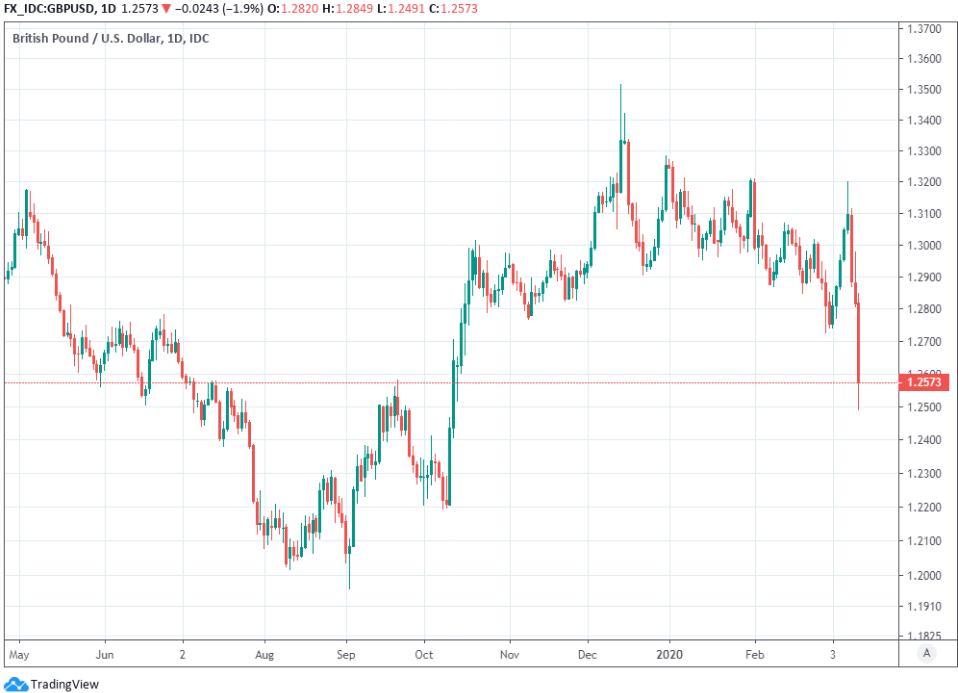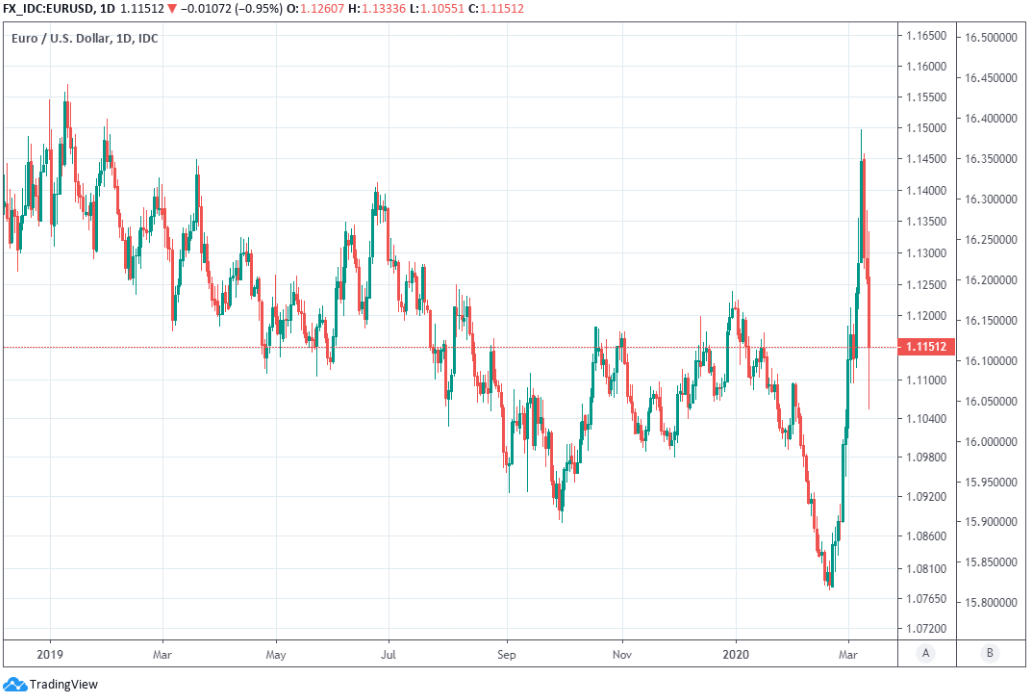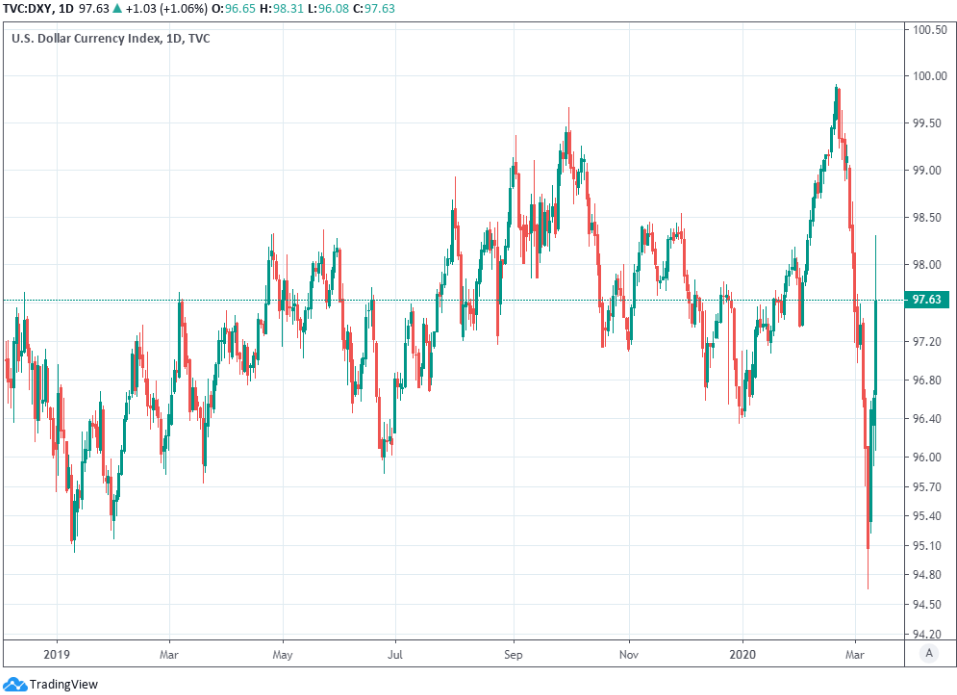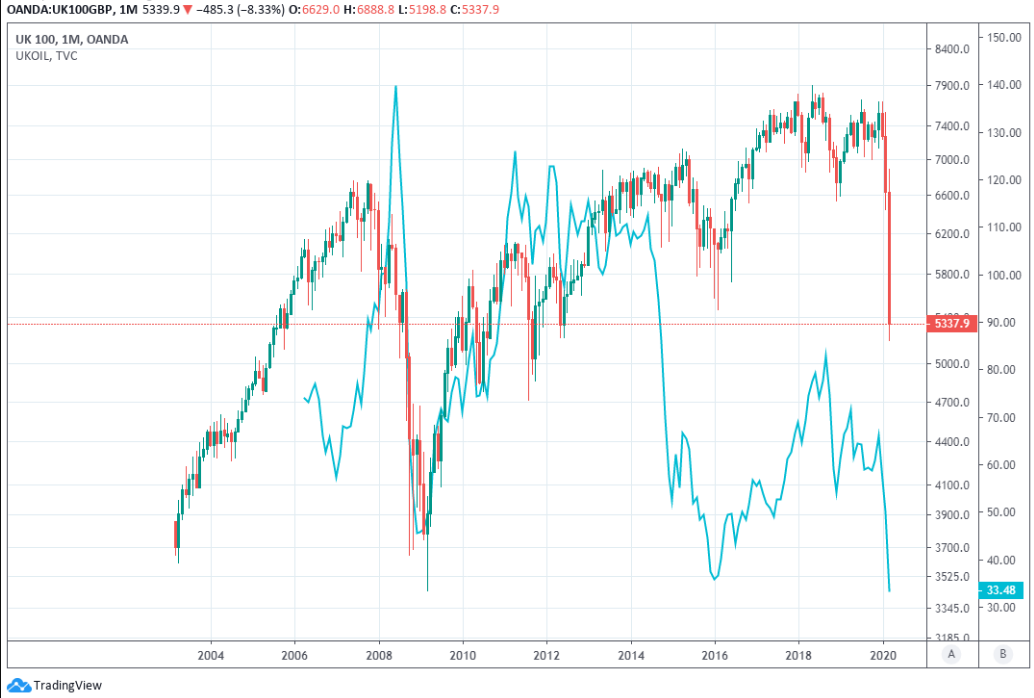U.S. Dollar Surges in Shock and Awe-inspiring Gains Over All Currencies
- Written by: James Skinner
-

Image © Adobe Images
- GBP/USD Spot rate: 1.2535, down -2.2% today
- Indicative bank rates for transfers: 1.2191-1.2279
- Transfer specialist indicative rates: 1.2342-1.2417 >> Get your quote now
The Dollar surged at a shock-and-awe-inspiring pace against all currencies Thursday as risk assets hemorrhaged more capital and investors flocked toward the liquidity and perceived safety of the U.S. greenback.
The Dollar Index was 1.75% higher at 98.14 Thursday, completing a reversal of last week's -3% decline and marking the largest one-day increase for the U.S. currency since at least when the trade war with China really got going back in August 2018. This saw Sterling fall -2.3% back to October 2019 levels near 1.25, in the worst day of trading for the British currency since the October 2016 flash-crash in the aftermath of the Brexit referendum.
"Sterling is severely under-performing its G7 peers this morning. We’ve heard some analysts chalk it up to a delayed reaction to yesterday’s 50bp BOE cut and today’s general rise in risk aversion, but we think today’s fall has more do with yesterday’s very poor NY close on the charts (technically selling) + fear that the UK could be next to experience a US-initiated travel ban, says Eric Bregar, head of FX strategy at Exchange Bank of Canada. "GBPUSD traders now have their sights set on trend-line support in the 1.2580s after the 1.2740s gave way."
Above: Pound-to-Dollar rate shown at daily intervals.
The Pound has since fallen below the 1.2580 support referred to by Bregar as the Dollar strengthened sharply against every last currency this reporter can think of, with awe-inspiring gains in some pairs. The Dollar rose more than 5% against a Norwegian Krone that was crumbling in sympathy with oil prices that were back near $30 per barrell, and in protest of a U.S. ban on travellers entering the country from Europe which is fast morphing into a Western Wuhan.
It's not clear what exactly caused the sharp turn about in the Dollar although it came in another session when stock markets were truly hemorrhaging capital, with trading on many indices suspended owing to the severity of losses that reached double-digit percentages in many cases. This was as investors sold government bonds in Europe and the emerging markets while piling into North American sovereign debt. The result for bond markets was lower yields in North America and increases for everybody else.
"Ms. Lagarde repeatedly referred to the need for fiscal policy to step up, even “come first”, eroding with a few sentences the power that her predecessor spent two terms nurturing. She even delivered the astonishing signal that the ECB is “not here to close spreads” with the result that BTP [Italian] yields are up over 50bp as I type, and this is an economy that has just imposed a lockdown of its economy to combat Covid-19. We are very certain that Ms. Lagarde will have to eat those particular words in due course," warns Claus Vistesen, chief Eurozone economist at Pantheon Macroeconomics.
Above: Euro-to-Dollar rate shown at daily intervals.
The global flight to the perceived safety of the U.S. and Canadian bond markets came as the European Central Bank (ECB) disappointed investors with its response to a growing coronavirus crisis that's already seen 60 million Italians subjected to an almost-China-style 'lockdown.' And as the continent's politicians were left reeling by U.S. restrictions on travel from Europe, where the viral pneumonia is spreading rapidly in all major economies.
Spanish officials were reported to have considered similar restrictions for the Madrid region on Thursday, host to Europe's third largest city, a day after Denmark sent public sector workers home and closed down schools as well as universities. The Nordic country is trying to prevent the health system from becoming overloaded while also seeking to protect the nation's weakest and most vulnerable citizens through this and other forms of 'social distancing.'
"Then Lagarde made her comments on spreads (after the piece went through our publishing systems) which we really didn’t expect: “ECB NOT HERE TO CLOSE BOND SPREADS.” That might be true in some sense of what they deem their mandate, but not what you say when markets are selling off on a day like today. This doesn’t change the conclusion of our risk off trades, it does make our confidence stronger in calling for USD higher here as funding is becoming an issue in certain pockets (and spreading more widely too)," says Jordan Rochester, a strategist at Nomura.
Above: Dollar Index shown at daily intervals.
Regardless of the underlying cause of Thursday's price action, it could be viewed like a red rag to a raging bull at the Federal Reserve (Fed), which cut its interest rate 50 basis points to 1.25% last week in a surprise move that appeared geared toward shoring up faltering investor confidence. And the bank was already expected to cut rates back to zero over the coming months before this week's coronavirus developments and subsequent market meltdown.
The Dollar is strengthening, this week's losses for some stock markets have surpassed those seen even during the global financial crisis and major economy bond yields have fallen to new record lows. 2-year U.S. yields were 0.45% Thursday despite the Fed Funds rate range of 1%-to-1.25%, and there's now a mounting prospect of some form of further intervention from the Fed.
It's not clear however, that rate cuts or even a return to quantitative easing would be enough to offset the allure of the Dollar's unrivalled pool of liquidity, which could mean the greenback forces Sterling and others to new lows yet.
"Thursday is turning into one of the darkest days of market dislocation since the Global Financial Crisis in 2008/09. The ECB package has failed to calm nerves (quite the opposite in fact) and market pricing suggests USD funding could be a problem again. Risk assets look set to stay under pressure, but QE from the Fed could turn the dollar around into next week," says Chris Turner, global head of markets and regional head of research for UK and CEE at ING.
Above: FTSE 100 index shown at monthly intervals alongside Brent crude oil futures price.













